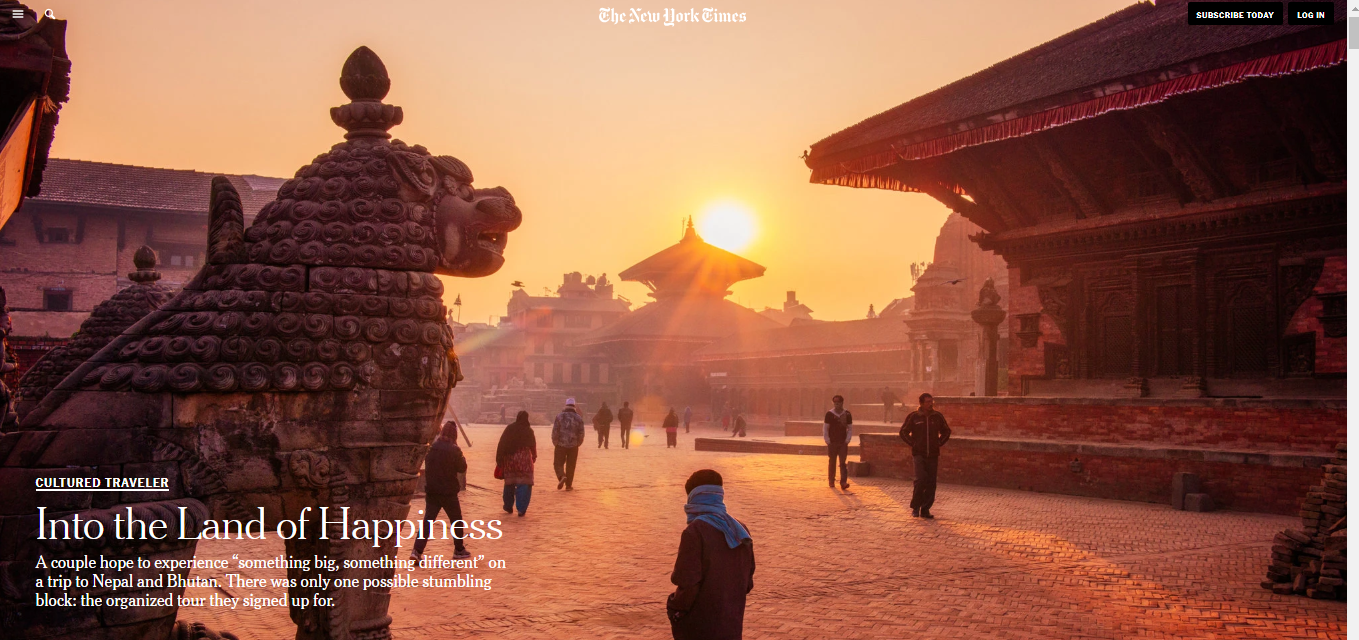The New York Times
Posted on 27th-Jul-2018
Last May, as a 30th anniversary gift to ourselves, my husband, Stuart, and I went on a tour of Nepal and Bhutan. Post-child-rearing but before (fingers crossed) grandchildren, we wanted something big, something different, something outside our comfort zone that wouldn’t actually be uncomfortable. Which meant hiring someone else to do the planning for us, in this case, a Massachusetts-based tour company called Odysseys Unlimited.
Squeezed between the northeastern tip of India, where it loops around Bangladesh, and the southernmost curve of Tibet, Nepal has a population that is mostly Hindu. Bhutan, in the same neighborhood, is largely Buddhist. Bhutan is also the last of the Himalayan kingdoms to remain a kingdom, with a hereditary monarchy and a culture largely untouched by the ravages of Hollywood’s fashion and pop dominance on the one hand, and that of environmental degradation on the other.
Until 1974, Bhutan didn’t let foreigners in. Since then, it’s been reinventing itself, casting itself as the world’s happiest nation and measuring its overall welfare not in terms of G.N.P. but by “gross national happiness,” as set forth in 2008 in the Constitution of Bhutan. For tourists, this means a $250 a day tariff (typically folded into other costs, including the required guide).








Leave Your Comment